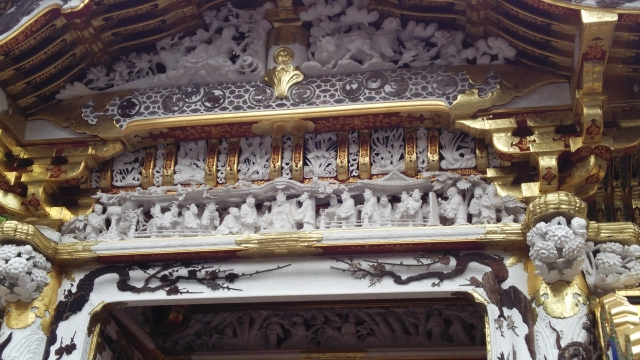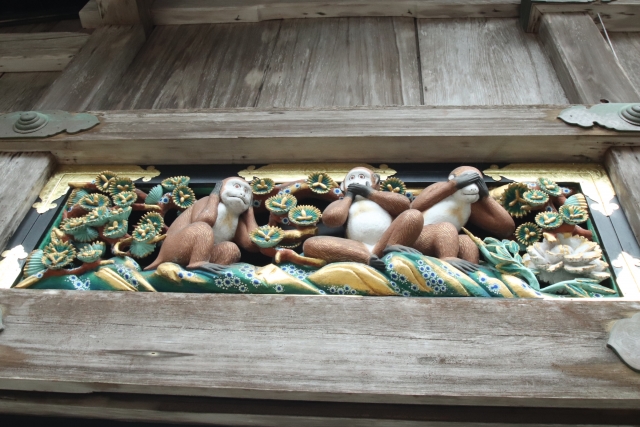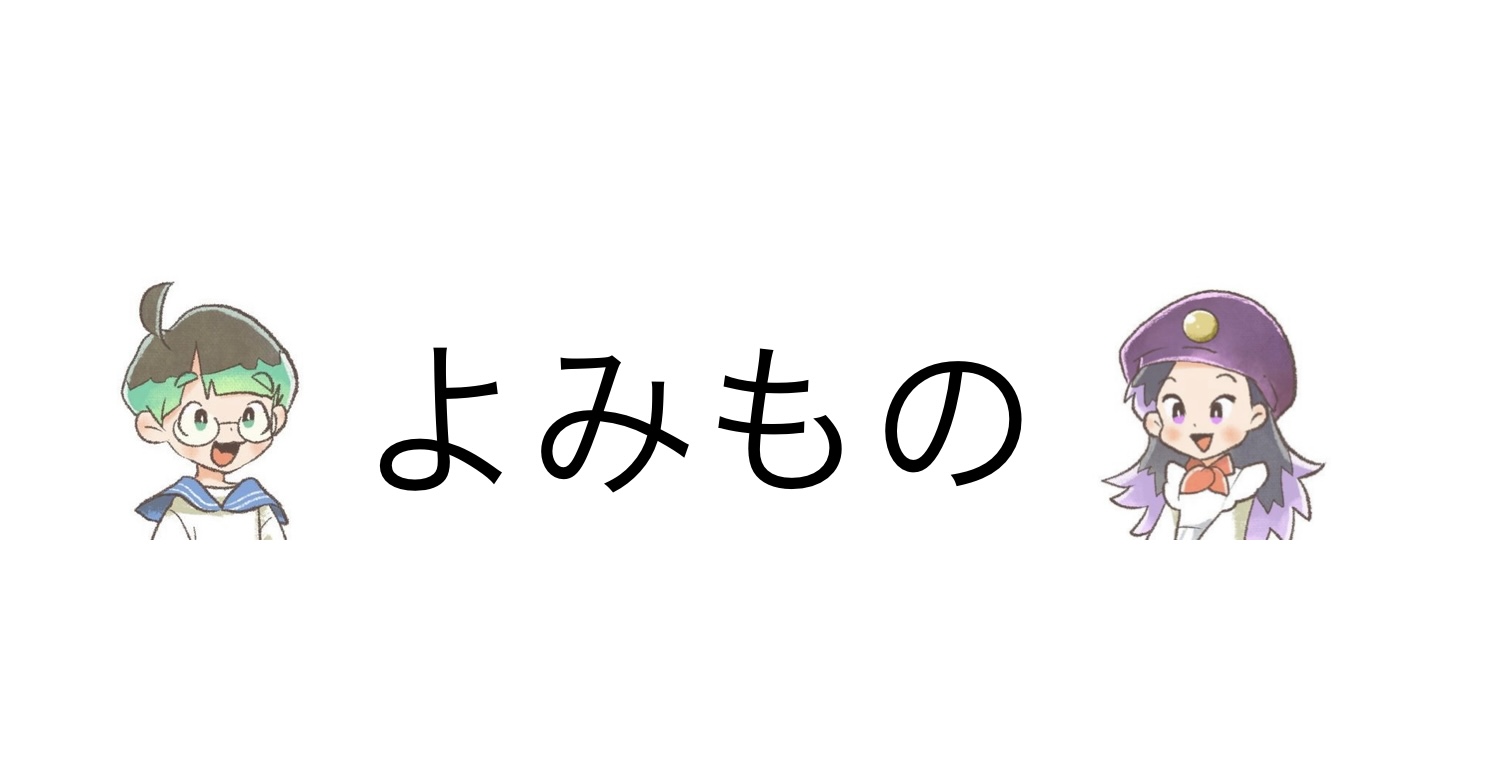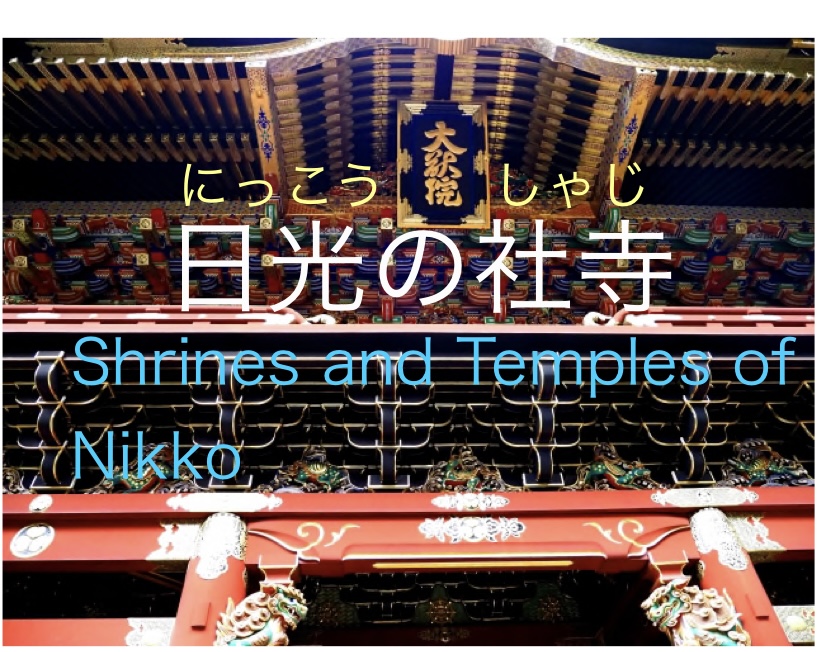
日光の社寺は、世界遺産の一つです。
日光市は、栃木県の北西部にあります。
日光市にある「日光の社寺」は、1999年(平成11年)に世界遺産に登録されました。
日光の社寺は、日光山内にある日光東照宮、日光山輪王寺、日光二荒山神社の103棟(国宝9棟、重要文化財94棟)の「建造物」と、これらの建造物をとりまく遺跡です。
日光東照宮は、江戸幕府を開いた徳川家康を東照大権現という神として祀った神社です。

徳川家康は、戦国時代の武将です。幼い頃は、近くに住んでいて力をもっていた織田家と今川家の人質になっていました。
徳川家康は、武将としての力を少しずつつけていき、豊臣秀吉の死後、関ヶ原の戦いに勝利して、天下統一を果たし、江戸幕府を開きます。
江戸幕府は、260年もの間、日本を治めることになります。
日光東照宮にある神厩舎は、神様に仕える馬をつなぐ厩です。
昔から猿は馬を守り世話をするとして、馬の守り神だともいわれています。このことから、神厩舎には猿の彫刻が8面にわたって彫られています。その中でも、「見ざる・言わざる・聞かざる」の三猿の彫刻が有名です。

「見ざる、聞かざる、言わざる」の三猿は、「悪い方に導く言葉を聞くな」、「悪い行ないを自然だと見るな」、「理由もなく悪く言うな」という教えを表しています。
法隆寺Horyuji Templeにすすむ(このブログにあるページ)
姫路城Hineji Castleにすすむ(このブログにあるページ)
屋久島 Yakusimaにすすむ(このブログにあるページ)
白神山地 Shirakami Mountainsにすすむ(このブログにあるページ)
Shrines and Temples of Nikko
Nikko City is located in the northwestern part of Tochigi Prefecture.
“Shrines and Temples of Nikko” in Nikko City was registered as a World Heritage Site in 1999.
The shrines and temples of Nikko are the 103 “buildings” (9 national treasures, 94 important cultural properties) of Nikko Toshogu Shrine, Nikkosan Rinnoji Temple, and Nikko Futarasan Shrine in the mountains of Nikko, and the ruins surrounding these buildings. .
Nikko Toshogu is a shrine that enshrines Tokugawa Ieyasu, the founder of the Edo Shogunate, as a god called Tosho Daigongen.
Tokugawa Ieyasu was a military commander during the Warring States period. When he was young, he was taken hostage by the powerful Oda and Imagawa families who lived nearby.
Tokugawa Ieyasu gradually gained strength as a military commander, and after the death of Toyotomi Hideyoshi, he won the Battle of Sekigahara, unified the country, and established the Edo Shogunate.
The Edo Shogunate will rule Japan for 260 years.
The Shinkyusha in Nikko Toshogu Shrine is a stable for horses that serve the gods. Since ancient times, monkeys have been said to protect and take care of horses, and are said to be the guardian deities of horses. For this reason, monkey sculptures are carved on eight sides of the shrine. Among them, the three monkey sculptures of “See no evil, speak no evil, hear no evil” are famous.
The three wise monkeys of “see no evil, hear no evil, speak no evil” represent the teachings of “don’t listen to words that lead to evil,” “don’t see bad behavior as natural,” and “don’t speak badly for no reason.”




コメント